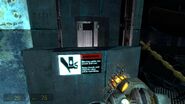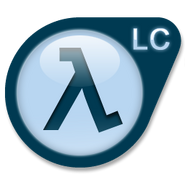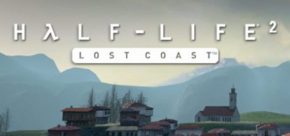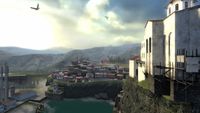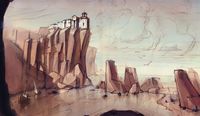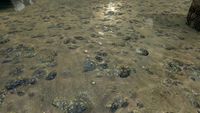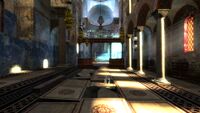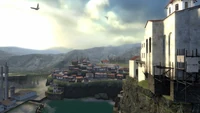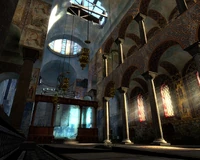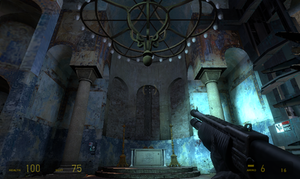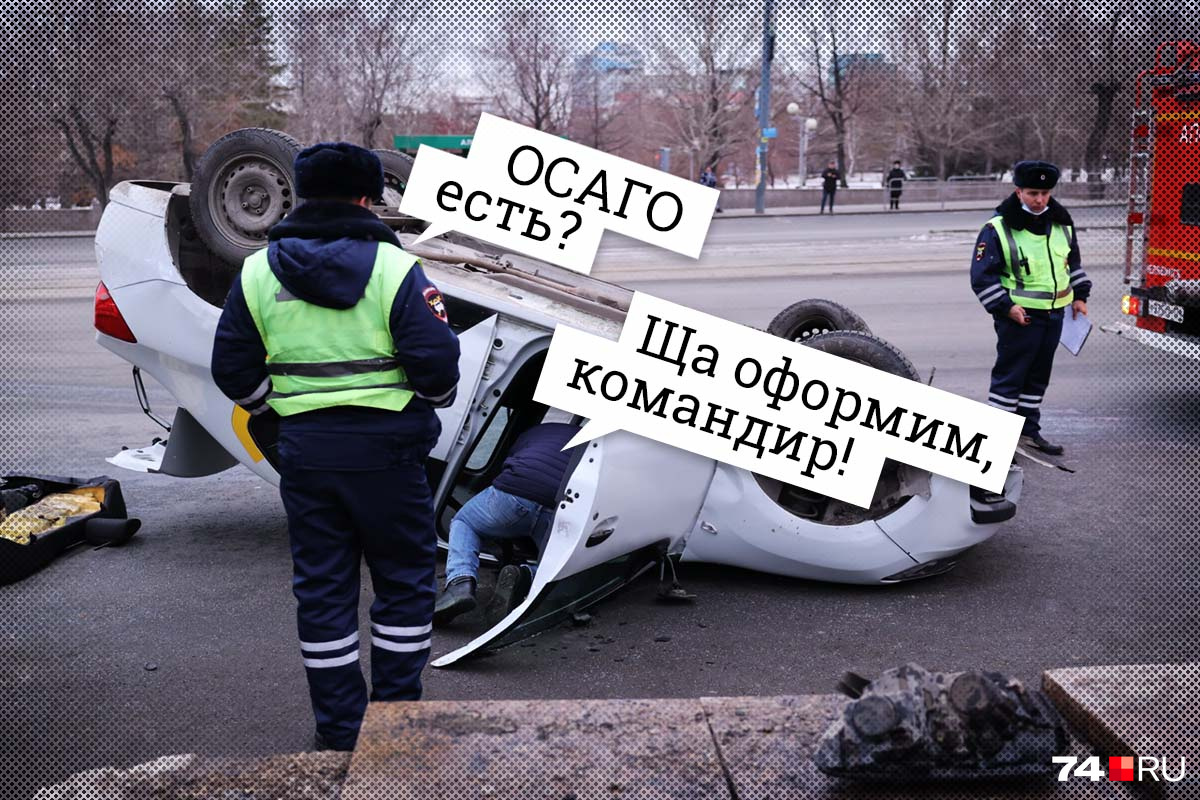| Эта статья неканоничная.
Предмет этой статьи не из «реальной» Вселенной Half-Life и, следовательно, не считается каноничным. |
Half-Life 2: Lost Coast — технический уровень, выпущенный для демонстрации новых технических возможностей (преимущественно High Dynamic Range) обновленного графического движка Source, которых не было в Half-Life 2.
Город Святая Ольга, где происходит действие, первоначально должен был быть помещён в Half-Life 2 между главами Шоссе 17 и Песчаные ловушки, но был вырезан.
Сюжет[]
Игра начинается с того, что Гордон Фримен приходит в себя на берегу возле высокой скалы, на которой стоит христианский храм. Судя по звуку всплеска, он упал в воду с высоты.
Неназванный человек, стоящий на причале, приветствует героя, но не может вспомнить его имя. Он сообщает, что здесь, у Святой Ольги, расположена база Альянса, с которой комбайны ведут артиллерийский обстрел. Рыбак открывает ворота, ведущие к подножию храма.
Ворота приводят к извилистой тропинке, идущей по краю скалы. Вскоре Фримен встречает некоторое сопротивление в виде солдат Патруля Альянса, некоторые из которых спускаются по тросам с вершины скалы. Когда Гордон идёт по тропинке, пусковая установка, расположенная на вершине, начинает обстрел Святой Ольги крабснарядами. Когда Гордон поднимается на вершину, он обнаруживает, что визуально церковь и установка оставлены без присмотра. Сама церковь практические не повреждена, однако лица всех изображённых на фресках людей затёрты.
У одной из стен строения находится пусковая установка, в который регулярно поступают новые крабснаряды для обстрела. Взяв одну из панелей корпуса, Гордон заклинивает орудие, чем вызывает его поломку. По сигналу тревоги начинают стягиваться силы Альянса, включая вертолёт-охотник. Фримен с боем покидает церковь, затем из гранатомёта сбивает вертолёт. Закончив уничтожение сил противника, Гордон спускается на лифте к рыбаку, после чего игра заканчивается.
Разработка[]
Дизайн уровня[]
Lost Coast изначально был частью главы Шоссе 17 в Half-Life 2 и был призван представить игроку установки, из которых пускались регулярно встречаемые в оригинальной игре крабснаряды. После выхода игры было решено выпустить этот уровень как техническую демонстрацию, более полно использующую возможности движка Source. Восточный архитектурный стиль, сочетающий большое разнообразие текстур, арок и резкие переходы между светом и тенью, который был применен дизайнерами для проектирования монастыря и прилежащих к нему зданий, стал идеальным местом для демонстрации HDR-эффектов.
Первоначально авторы также считали, что на фоне монастыря возможно было четко отразить контраст между человеческой архитектурой и строениями пришельцев. Этот прием был использован при дизайне тюрьмы Нова Проспект.
HDR[]
Кроме более детализированных моделей и текстур высокого разрешения, Lost Coast предложил игрокам эффект HDR. Данный приём применялся и раньше (в Day of Defeat: Source), однако именно в Lost Coast его возможности использованы полностью.
HDR эмулирует естественную адаптацию глаза к свету. К примеру, после выхода из тёмного помещения на освещённую улицу она сначала кажется очень яркой, потом яркость приходит в норму; при входе в тёмное помещение, наоборот, сначала ничего не видно. Кроме того, HDR использует эффект «bloom» (часто ошибочно принимаемый за полную реализацию HDR) — размазывание края объектов, частично закрывающих яркий источник света.
Комментарии разработчиков[]
См. основную статью «Комментарии разработчиков»
Lost Coast была тестовым полигоном для режима аудиокомментариев. Чтобы запустить комментарий, игрок должен найти висящую в воздухе иконку в виде «облака» диалога из комиксов. Игроки могут услышать от разработчиков о том, что они видят, почему группа решила сделать то, что она сделала, с какими проблемами она сталкивалась и так далее. Некоторые комментарии могут включать и видеоэффекты, прерывающие ход игры, такие, как вид из камеры под особым углом или разделение экрана на области. Впоследствии, после положительных откликов от игроков, разработчики стали добавлять подобные комментарии во все свои последующие игры.
За кулисами[]
- Файл субтитров указывает, что финальный разговор с рыбаком должен был быть гораздо длиннее. Что любопытно, в нём упоминается вырезанный из Half-Life 2 буллсквид.
- Потерянное побережье буквально — в Half-Life 2 нет карты d2_coast_02 как таковой, после d2_coast_01 идет сразу d2_coast_03. Объяснить просто — уровень был вырезан из оригинала и задействован в Half-Life 2: Lost Coast. В файлах игры лишь прописан её идентификационный номер, на который ссылается консоль при наборе названия карты.
- Карта из Lost Coast в том варианте, который был найден в файлах Half-Life 2 Beta, сильно отличается от релизной. Так, здесь полностью отсутствуют какие-либо NPC, оружие и ящики с припасами; установка с крабснарядами не работает. Сама карта примерно в два раза больше по площади и включает водное пространство для перемещения на аэроглиссере, а также широкий пролив, через который игрок перепрыгивает с помощью катапульты. В церкви отсутствуют иконы.
Интересные факты[]
- Рыбак не имеет физической модели, поэтому, если он умирает, то это приводит к вылету игры.
- На карте можно noclip’ом найти штурмовик до атаки вертолёта-охотника.
- Вертолёт-охотник, который выступает в конце демо, ведёт себя и даже звучит как штурмовик; он гораздо точнее и сбивает летящие в него ракеты.
- Рыбак — первый персонаж Source, чьё лицо было сделано с нуля, без реальной модели.
- Несмотря на то, что на корпусе установки висит надпись, предупреждающая о том, что снаряд может раздавить предмет, попавший в снарядоприёмник, установка отключается любым попавшим внутрь предметом; интересно, что уничтожить установку гранатой или гранатомётом нельзя.
- Half-Life 2: Lost Coast — в настоящее время единственная игра, не требующая обновления для использования Source Engine 15.
- Во время последней битвы с вертолётом при включении расположенного здесь комментария игра «замораживается», позволяя игроку запросто расправиться с противником.
Галерея[]
Слева — стандартный рендеринг. Справа — HDR-рендеринг.
Святая Ольга и монастырь.
Внутри монастыря.
Рыбак, встречающий Гордона на причале.
Предупреждающая надпись на корпусе пусковой установки.
Иконка Lost Coast.
| Вселенная Half-Life | |
|---|---|
| Серия Half-Life | Half-Life: Day One (Демо) · Half-Life · Half-Life: Uplink (Демо) · Half-Life: Opposing Force · Half-Life: Blue Shift · Half-Life: Decay Half-Life 2 · Half-Life 2: Episode One · Half-Life 2: Episode Two Half-Life: Alyx |
| Серия Portal | Portal: First Slice (Демо) · Portal · Portal 2 · Peer Review · Perpetual Testing Initiative · Sixense MotionPack · Sixense Perceptual Pack |
| Портированные версии игр | Half-Life (порт на Dreamcast) · Half-Life (порт на PlayStation 2) · Half-Life: Source · Half-Life Deathmatch: Source · Portal: Still Alive |
| Технологические демо | Aperture Desk Job · Directed Design Experiments · Get Your Free TVs! · Half-Life 2: Lost Coast · Polyrobo · Portal with RTX · Probe Droid · Source Particle Benchmark · Демонстрации Half-Life · Демонстрации Half-Life 2 |
| VR-демо | Aperture Hand Lab · Robot Repair · Moondust · The Lab |
| Игровые режимы | Alien Mode · Capture The Flag · Futbol (вырезано) · Кооперативный режим Half-Life (вырезано) |
| Отменённые игры | Borealis · F-STOP · Prospero · Half-Life: Hostile Takeover · Half-Life 2: Episode Three · Return to Ravenholm · Эпизод Уоррена Спектора |
| Другие официальные игры | Bridge Constructor Portal · Deathmatch Classic · Half-Life 2: Deathmatch · Half-Life 2: Survivor · Portal Pinball · Portal: The Uncooperative Cake Acquisition Game |
| Сборники | Half-Life: Further Data · Half-Life: Generation · Half-Life: Initial Encounter · Portal: Companion Collection · The Orange Box |
| ARG | Half-Life 2 ARG · Portal ARG · PotatoFoolsDay ARG |
| Связанные игры | Codename: Gordon · Half-Line Miami · Lego Dimensions · Narbacular Drop · Tag: The Power of Paint · Модификации |
| Графические движки | GoldSrc · Source · Source 2 |
| Другие программы | Half-Life SDK · Source SDK · Valve Hammer Editor |
| Прочее | ApertureScience.com · Half-Life High Definition Pack · Half-Life Mod Expo · Half-Life Preliminary Findings · Half-Life: Uplink (фильм) · Mr. Valve · Брин-личинка · Интерактивный тизер Super 8 · Канон · Коллекционные карточки Steam · Пасхальные яйца · Разработка Half-Life 2 · Ретконы · Спидраны · Список моделей HECU · Список моделей граждан · Ссылки в популярной культуре · Цензурная версия Half-Life |
| Half-Life 2: Lost Coast | |
|---|---|
|
|
|
| Разработчик |
|
| Издатель |
|
| Локализатор |
|
| Часть серии |
Half-Life |
| Дата выпуска |
|
| Жанр |
Шутер от первого лица/Техническое демо |
| Платформы |
PC (Microsoft Windows) |
| Игровой движок |
Source |
| Режимы игры |
Однопользовательская игра |
| Носитель |
Загрузка через Steam |
| Системные требования |
Система: Windows XP, Windows Vista, Windows 7 Минимальные:
|
| Управление |
PC: клавиатура и мышь |
| Сайт |
http://store.steampowered.com/app/340/ |
Half-Life 2: Lost Coast (рус. «Затерянное побережье») — распространяемый в составе комплектов Half-Life Complete и Valve Complete Pack уровень к игре Half-Life 2, выпущенный Valve Corporation через Steam в виде отдельной игры 27 октября 2005. Игра была выпущена для демонстрации новых технических возможностей (преимущественно High Dynamic Range) обновленного графического движка Source, которых не было в Half-Life 2. Уровень игры был создан с уклоном на окружение, способное наиболее качественно продемонстрировать возможности данной технологии. Также Lost Coast является первой игрой Valve со встроенными комментариями разработчиков (подробности вы найдете ниже), позднее их стали добавлять во все одиночные игры компании (в отличие от Lost Coast, в полномасштабных играх вроде Portal комментарии доступны только в специальном режиме прохождения).
Содержание
- 1 Сюжет
- 2 История создания
- 2.1 Дизайн уровня
- 2.2 HDR
- 2.3 Система аудиокомментариев
- 3 Ссылки
Сюжет
Гордон Фримен, бессменный герой обеих частей Half-Life, приходит в сознание на берегу моря, неподалёку от прибрежного посёлка Святой Ольги. Его встречает старый рыбак, объясняющий, что Альянс захватил церковь на скале, возвышающейся над морем, и установил там пусковую установку для ракет с хедкрабами, из которых начал обстреливать посёлок. Игроку в роли Гордона предстоит подняться вверх и добраться до церкви, по пути сражаясь с солдатами и вертолётом Альянса, и уничтожить установку.
История создания
Дизайн уровня
Lost Coast изначально был частью главы «Highway 17» («Шоссе 17») в Half-Life 2 и был призван представить игроку расположение артиллерийских пушек, из которых выстреливались капсулы с хэдкрабами, которые периодически встречались по ходу игры, вырезан из окончательной версии игры из-за ограничений по срокам разработки. После выхода игры было решено выпустить этот уровень как отдельное дополнение, превратив его в техническую демонстрацию для мощных компьютеров, более полно использующую возможности движка Source. Восточный архитектурный стиль, сочетающий большое разнообразие текстур, арок и резкие переходы между светом и тенью, который был применен дизайнерами для проектирования монастыря и прилежащих к нему зданий стал идеальным местом для демонстрации HDR-эффектов. Первоначально авторы также считали, что на фоне монастыря возможно было четко отразить контраст между человеческой архитектурой и строениями пришельцев — но впоследствии этот прием был использован на уровнях в Нова Проспект.
HDR
Сравнение обычной технологии рендеринга (слева) с HDR-технологией (справа)
Кроме более детализованных моделей и текстур высокого разрешения, в Lost Coast впервые были продемонстрированы возможности HDR, которые были введены в движок Source с выходом Day of Defeat: Source, но именно в Lost Coast они были использованы на полную мощность (которой трудно требовать от сетевой игры, где важнее производительность, а не качество картинки). HDR эмулирует естественную адаптацию глаза к свету. К примеру, после выхода из тёмного помещения на освещённую улицу она сначала кажется очень яркой, потом яркость приходит в норму; наоборот, при входе в тёмное помещение сначала почти ничего не видно. Кроме того, HDR использует эффект «bloom» (часто ошибочно принимаемый за полную реализацию HDR), размазывающий края объектов, частично закрывающих яркий источник света, для эмуляции большего диапазона яркости, чем тот, что обеспечивается монитором.
Система аудиокомментариев
Кроме визуальных новшеств, Lost Coast впервые представил систему комментариев, рассказывающих о создании игры и использованных в ней технологиях. Комментарий выглядит как маленькое облако диалога из комикса с символами «…» на нём, при «использовании» которого проигрывается аудиофайл. Некоторые комментарии могут включать и видеоэффекты, прерывающие ход игры, такие как вид из камеры под особым углом или разделение экрана на две по-разному отрисованные области для демонстрации отличий по сравнению со старыми технологиями. Впоследствии, после положительных откликов от игроков, разработчики стали добавлять подобные комментарии во все свои последующие игры.
Ссылки
- Страница игры на Steam (рус.)
Статьи о Lost Coast на Half-Life Inside (рус.):
- Предварительный обзор
- Система комментариев
- Технология
| |
||
|---|---|---|
| Half-Life |
Opposing Force • Blue Shift • Decay • Day One • Uplink |
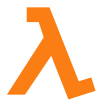 |
| Half-Life 2 |
Episode One • Episode Two • Episode Three • Episode Four |
|
| Сборники |
Half-Life 1 Anthology • The Orange Box |
|
| Другие версии |
Codename: Gordon • Half-Life 2: Beta • Half-Life 2: Deathmatch • Half-Life 2: Survivor • Half-Life: Source (Half-Life Deathmatch: Source) • Lost Coast |
|
| Главные герои |
Гордон Фримен • Адриан Шепард • Барни Калхаун • Джина Кросс • Колетт Грин |
|
| Другие персонажи |
G-Man • Айзек Кляйнер • Аликс Вэнс • Арне Магнуссон • Джудит Моссман • Доктор Розенберг • Илай Вэнс • Одесса Каббедж • Отец Григорий • Пёс • Ричард Келлер • Уоллес Брин |
|
| Противники |
Альянс • Вортигонты • Фауна Зена • Муравьиные львы • Раса X • Хедкраб • Организации серии игр Half-Life |
|
| Локации |
Зен • Сити 17 • Чёрная Меза |
|
| Связанная продукция |
Black Mesa • Half-Life 2: Raising the Bar • Half-Life: Escape from City 17 • Half-Life: Uplink (фильм) • Гражданин: полужизнь и смерть Гордона Фромана |
|
| Прочее |
Гравитационная пушка • Список оружия в серии игр Half-Life 2 • Семичасовая война |
| |
|---|
|
Half-Life (Opposing Force • Blue Shift • Decay • Uplink • Day One • Source) • Half-Life 2 (Episode One • Episode Two • Episode Three • Episode Four • Deathmatch • Lost Coast • Survivor) • Counter-Strike (Condition Zero • Neo • Source • Online • Global Offensive) • Team Fortress Classic (Team Fortress 2) • Portal (Portal 2) • Day of Defeat (Source) • Left 4 Dead (Left 4 Dead 2) • Deathmatch Classic • Ricochet • Alien Swarm • Dota 2 |
| |
|||||
|---|---|---|---|---|---|
| Valve |
|
||||
| Kuma |
The DinoHunters • Dogfights: The Game • Shootout! The Game • The Kill Point: Game • KumaWar 2 |
||||
| Прочие |
The Crossing (Проект заморожен) • Dark Messiah of Might & Magic • Garry’s Mod • Vindictus (Mabinogi: Heroes) • Nuclear Dawn • E.Y.E: Divine Cybermancy • Postal III • Scivelation • SiN Episodes • Sting: The Secret Operations • Hybrid • The Ship • Tactical Intervention • Bloody Good Time • Vampire: The Masquerade – Bloodlines • Zeno Clash • Dear Esther |
Login
Store
Community
Support
Change language
View desktop website

Half-Life 2: Lost Coast
Check out the entire Half-Life franchise on Steam
About This Game
Originally planned as a section of the Highway 17 chapter of Half-Life 2, Lost Coast is a playable technology showcase that introduces High Dynamic Range lighting to the Source engine.
System Requirements
Minimum: Pentium 4 2.4GHz or AMD 2800+ Processor, 1GB RAM, DirectX 9 level graphics card, Windows XP, Mouse, Keyboard, Internet Connection
More from Half-Life
More like this
What Curators Say
181 Curators have reviewed this product. Click here to see them.
Customer reviews
Overall Reviews:
Very Positive
(8,699 reviews)
Recent Reviews:
Overwhelmingly Positive
(136 reviews)
Review Type
All (11,403)
Positive (10,114)
Negative (1,289)
Purchase Type
All (11,403)
Steam Purchasers (8,699)
Other (2,704)
Language
All Languages (11,403)
Your Languages (5,863)
Date Range
To view reviews within a date range, please click and drag a selection on a graph above or click on a specific bar.
Show graph
Lifetime
Only Specific Range (Select on graph above)
Exclude Specific Range (Select on graph above)
Playtime
Filter reviews by the user’s playtime when the review was written:
No Minimum
Over 1 hour
No minimum to No maximum
Display As:
Show graph
Hide graph
Filters
Excluding Off-topic Review Activity
Playtime:
There are no more reviews that match the filters set above
Adjust the filters above to see other reviews
| This article is non-canon. |
|
|
|---|---|---|
|
The subject matter of this article does not take place in the «real» Half-Life and Portal universe and is considered non-canon. |
Half-Life 2: Lost Coast is a technology demo showing off the Source engine’s HDR rendering capabilities. The town of St. Olga, where the game is set, was originally slated to take place during the Coast chapters, but was dropped. Lost Coast was released on October 27, 2005[1] as a free download to all owners of Half-Life 2.
Contents
- 1 Plot
- 2 Development
- 2.1 Level design
- 2.2 High-dynamic-range rendering
- 2.3 Commentary system
- 3 Release and reception
- 4 Soundtrack
- 5 Trivia
- 6 Gallery
- 6.1 Logos and banners
- 6.2 Concept art
- 6.3 Screenshots
- 7 References
- 8 External links
Plot[edit]
St. Olga and the monastery.
The level begins with Gordon Freeman finding himself near a group of decaying piers, underneath a monastery set up on rocks and overlooking the small town of St. Olga.
A fisherman standing on a dock recognizes the player as Gordon, although he cannot accurately remember his last name, and tells him that the Combine have made a base in the area. He lets Freeman through a gate and tells him to «take out that gun».
The gate leads to a winding path along the side of the outcrop the church is located. The player soon encounters resistance in the form of Combine Soldiers, some of whom rappel from the cliffs above. As he proceeds up the cliff, a launcher based in the church at the top begins bombarding the nearby town with Headcrab Shells. Upon reaching the top of the cliff, the player finds the church and its courtyard unguarded. The church itself is relatively undamaged except for the religious paintings on the walls, the faces of all but a few of the characters having been rubbed away.
Inside the building, the Combine have constructed the shell launcher. At regular intervals, shells are loaded into the chamber and launched at the town. Gordon destroys the launcher by jamming the mechanism with debris, and an alarm is triggered, prompting the Combine to launch a second attack on the church itself, with a Hunter-Chopper acting as air support. Gordon fights his way out of the church and shoots down the aircraft with an RPG. After completing the task, Gordon rides an elevator back down to the dock, where he meets up with the Fisherman again, at which point the level fades to black, with the old man commenting that Gordon is «getting fuzzy around the edges».
Development[edit]
Level design[edit]
Concept art for St. Olga’s monastery church.
Lost Coast was originally conceived as a part of the Highway 17 chapter in Half-Life 2 (Highway 17‘s development name was «Coast», hence the name «Lost Coast»), but was later discarded during development. As a result, Lost Coast features minor storyline details that were removed from Half-Life 2, such as the Headcrab Shell launchers. Each area of the level was designed with a specific purpose. An Eastern Orthodox architectural style was deliberately chosen for the monastery, as buildings of this type «are very colorful and have a large variety of materials» and are «often lit naturally, with extremes of darkness and brightness,» providing an ideal showcase for the HDR lighting effects.[2] Valve also thought that the use of a monastery would help provide a starker contrast between old human architecture and futuristic Combine technology found within it.[2] The cliffside that leads to the monastery had a gameplay-oriented purpose, and was meant to emulate a similar cliffside combat scene in Half-Life. The cliffside also forces the player to be observant of threats from above and below, breaking from normal horizontal combat.[2] The monastery’s courtyard was designed as an area where the player recovers from the cliffside combat, while also presenting a contained combat arena later in the level in which the player must hold their ground while they are attacked from multiple directions.[2]
High-dynamic-range rendering[edit]
The goal of Lost Coast was to demonstrate the new high-dynamic-range rendering implemented into the Source game engine.[3] Valve first attempted to implement high-dynamic-range rendering in Source in late 2003. The first method stored textures in RGBA color space, allowing for multisample anti-aliasing and pixel shaders to be used, but this prevented alpha mapping and fog effects from working properly, as well as making textures appear sharp and jagged.[4] The second method involved saving two versions of a texture: one with regular data, and the other with overbrightening data. However, this technique did not allow for multisample anti-aliasing and consumed twice as much video card memory, making it infeasible.[4] The third method, shown at the E3 convention in 2005, used floating point data to define the RGB color space, allowing for reasonably efficient storage of the high-dynamic-range data. However, this method also did not allow for multisample anti-aliasing, and was only compatible with Nvidia video cards, leaving ATI cards unable to run high dynamic range.[4] The fourth and final method compromised between the second and third methods, using overbrightening textures sparingly and allowing ATI cards to render HDR in a different way to the Nvidia ones while nearly producing the same end result.[4]
The final version of Valve’s high-dynamic-range technology adds a significant number of lighting effects to the engine, aimed at making the game appear more realistic. Bloom shading was introduced, blurring bright edges in the game world and emulating a camera’s overexposure to light.[5] This is combined with exposure control to tailor the effect to represent the human eye. For example, as the player exits a dark area into a light area, the new area is initially glaringly bright, but quickly darkens, representing the adjustment of the player character’s eyes to the light.[6] New cube mapping techniques allow the reflection cast by an object to correspond with the brightness of the light source, and lightmaps enable light bouncing and global illumination to be taken into account in the rendering.[5] Refraction effects were added to make light account for the physical attributes of an object and to emulate the way light is reflected by water.[5] The Lost Coast level is specifically designed to showcase these effects. It uses the sea and beach as opportunities to demonstrate water-based effects, the monastery to demonstrate bloom from its whitewash walls, and the sanctuary to provide the means to show refraction through stained glass windows and cube maps on golden urns and candlesticks.[7]
As a technology showcase, Valve considered Lost Coast to have very demanding system requirements.[8] The game runs on computers with specifications lower than what is recommended, albeit without some key features such as high dynamic range. If a non-high-dynamic-range-capable card is used, the developer commentary is changed slightly to reflect this. For example, Gabe Newell would describe the effects that are seen in a different manner.[9]
[edit]
In addition to a showcase for visual improvements, Lost Coast acted as a testbed for Valve’s commentary system. When the feature is enabled, additional items appear in the game that can be interacted with to play an audio commentary. Each audio piece ranges from ten seconds to a minute of commentary. Players hear the developers talk about what the player is seeing, what is happening, why they made certain decisions, and what kinds of challenges they faced. Commentary tracks are represented by floating speech bubbles called commentary nodes.[10] Valve intended for players to first play the level with commentary disabled, and after completing the level, play it again with commentary enabled, learning about each new stage as they progress.[11] The company has made the commentary system standard in all of its later video games.[12]
Release and reception[edit]
Inside St. Olga monastery’s church.
Lost Coast was released on October 27, 2005, as a free download from Valve’s Steam content delivery service to anyone who purchased Half-Life 2.[13] People who received Half-Life 2 as a gift from Valve’s online store were not eligible to download the level. Valve announced on May 30, 2007 that Lost Coast, along with Half-Life 2: Deathmatch, would be made available for free to owners of ATI Radeon cards.[14] It was later released without charge to Nvidia graphics card owners along with Half-Life 2: Deathmatch, Peggle Extreme and Portal: First Slice.[15]
Lost Coast was generally well received by video game critics. 1UP.com enjoyed the amount of detail, including the graphics, puzzles, and intelligent enemies, saying, «Valve just packed more atmosphere into a tiny snippet than most shooters muster, period.» The review also praised the level’s commentary system, calling it an informative addition, and enjoyed the interesting and insightful comments made by some of its creators.[16] The level satisfied UGO because «it would be harder not to enjoy this level in all its beautifully rendered glory—even after you’ve broken all the windows and spattered the walls with Combine blood,»[17] and GameSpot commented that «the textures in Lost Coast are noticeably more detailed and numerous than in the retail game.» The review concluded hoping that the features introduced in Lost Coast would be included in Valve’s future releases.[9]
Negative reaction to the game focused on its length and gameplay. 1UP.com and UGO both considered it short;[16][17] Shawn Elliott of 1UP.com described it as «a lickety-split run through postcard-pretty tide pools, up cliffs, and into a church turned Combine outpost».[16] UGO’s Nigel Grammer stated that Lost Coast`s gameplay seemed to be secondary to the level’s graphics.[17] Lost Coast`s gameplay disappointed Brad Shoemaker of GameSpot, who compared it to that of Half-Life 2 and considered them to be very similar, saying that it «isn’t going to set the world on fire».[9]
Soundtrack[edit]
The only audio track featured in Lost Coast is Dark Interval, also used in Half-Life 2: Episode Two. It plays when first entering the St. Olga monastery.
Trivia[edit]
- The Hunter-Chopper that opposes the player towards the end of the demo behaves and sounds like the Combine Gunship; it shoots down incoming rockets and its pulse gun is much more accurate.
- In the Source SDK Base, a flyby of this level can be launched as a video stress test.
Gallery[edit]
Logos and banners[edit]
-
Steam header.
-
Steam hero image.
-
Steam logo.
Concept art[edit]
-
Concept art for St. Olga’s monastery church.
-
Ditto.
-
Ditto.
-
The Fisherman concept art.
-
Ditto.
-
The Fisherman character sheet.
Screenshots[edit]
-
Shipwreck at the feet of the cliff.
-
The Fisherman against the sunlight.
-
St. Olga being bombarded by Headcrab Shells.
-
The Headcrab Shell launcher in St. Olga monastery’s church.
References[edit]
- ↑ Lost Coast on Steam
- ↑ 2.0 2.1 2.2 2.3 Half-Life 2: Lost Coast commentary
- ↑ Lee, Garnett (2005-08-29). Half-Life 2: Aftermath and Lost Coast. 1UP.com. Retrieved on 2008-11-20.
- ↑ 4.0 4.1 4.2 4.3 Reimer, Jeremy (September 15, 2005). A primer on HDR and a tour of Valve’s Lost Coast: The road to HDR. Ars Technica. Retrieved on November 21, 2008.
(archived)
- ↑ 5.0 5.1 5.2 Richards, Geoff (June 14, 2005). Lost Coast / Source HDR Feature Set. bit-tech. Retrieved on November 20, 2008.
(archived)
- ↑ Richards, Geoff (June 14, 2005). Under & Over Exposure. bit-tech. Retrieved on November 20, 2008.
(archived)
- ↑ Richards, Geoff (June 14, 2006). Half Life 2: Lost Coast HDR Eye Candy. bit-tech. Retrieved on November 20, 2008.
(archived)
- ↑ Bramwell, Tom (October 28, 2005). HL2 Lost Coast released. Eurogamer. Retrieved on November 20, 2008.
(archived)
- ↑ 9.0 9.1 9.2 Shoemaker, Brad (July 28, 2005). Half-Life 2 Lost Coast Hands-On. GameSpot. Retrieved on October 17, 2008.
(archived)
- ↑ Half-Life 2: Lost Coast Overview. Planet Half-Life. GameSpy. Retrieved on November 21, 2008.
(archived)
- ↑ Richards, Geoff (September 14, 2005). Preview: Half-Life 2: Lost Coast: Thoughts. bit-tech. Retrieved on November 21, 2008.
(archived)
- ↑ Steam Marketing Message. Valve Corporation (August 5, 2005). Retrieved on October 17, 2008.
(archived)
- ↑ Pinckard, Jane (October 27, 2005). Lost Coast Out Now. 1UP. Retrieved on November 20, 2008.
- ↑ Valich, Theo (May 30, 2007). Valve gives free games to ATI Radeon owners. The Inquirer. Retrieved on May 31, 2007.
(archived)
- ↑ Swinburne (January 10, 2008). Free Portal to all Nvidia GeForce owners. bit-tech. Retrieved on November 29, 2008.
(archived)
- ↑ 16.0 16.1 16.2 Elliott (October 28, 2005). Half-Life 2: Lost Coast (PC). 1UP. Retrieved on November 20, 2008.
(archived)
- ↑ 17.0 17.1 17.2 Grammer, Nigel. Half-Life 2: Lost Coast Review. UGO. Retrieved on November 20, 2008.
(archived)
External links[edit]
Half-Life 2: Lost Coast on Steam
- EuroGamer Half-Life 2: Lost Coast preview
- bit-tech.net Half Life 2: Lost Coast HDR overview
- bit-tech.net Half-Life 2: Lost Coast playtest
- bit-tech.net Half-Life 2: Lost Coast benchmark
| Games, software, and related subjects | |
|---|---|
| Half-Life game series | Half-Life (multiplayer) · Half-Life: Opposing Force (multiplayer · Capture The Flag) · Half-Life: Blue Shift · Half-Life: Decay
Half-Life 2 · Half-Life 2: Episode One · Half-Life 2: Episode Two · Future of the Half-Life series |
| Portal game series | Portal · Portal 2 · Peer Review · Perpetual Testing Initiative |
| Demos | Half-Life: Day One · Half-Life: Uplink · Portal: First Slice |
| Ports | Half-Life ports (Dreamcast · PlayStation 2 · Half-Life: Source · Half-Life Deathmatch: Source) · Portal: Still Alive |
| Technology demos | Aperture Desk Job · Directed Design Experiments · Get Your Free TVs! · Half-Life Alpha · Half-Life demonstrations · Half-Life 2 demonstrations · Half-Life 2: Lost Coast · Polyrobo · Portal with RTX · Probe Droid · Source Particle Benchmark |
| VR technology demos | Aperture Hand Lab · The Lab (Postcards · Slingshot · Longbow · Xortex 26XX · Secret Shop · Robot Repair · Solar System · Human Body Scan · Shooter) · Moondust |
| Cancelled games | Borealis · Half-Life: Hostile Takeover · Prospero · Return to Ravenholm · Shooter · Unannounced Half-Life project · Warren Spector’s Half-Life 2 episode |
| Other official games | Bridge Constructor Portal · Deathmatch Classic · Half-Life 2: Deathmatch · Half-Life 2: Survivor (Battle Mode · Mission Mode · Story Mode) · Lego Dimensions · Portal Pinball · Portal 2 Sixense MotionPack DLC · Portal: The Uncooperative Cake Acquisition Game |
| Compilations | Half-Life: Further Data · Half-Life: Generation · Half-Life: Initial Encounter · The Orange Box · Portal: Companion Collection |
| ARGs | Half-Life 2 ARG · Portal ARG · PotatoFoolsDay ARG |
| Third-party games | Black Mesa (Achievements · Soundtrack) · Codename: Gordon · Garry’s Mod · Lamarr Goes to the Zoo · Mods · Narbacular Drop · Portal: The Flash Version · Sven Co-op · Tag: The Power of Paint |
| Leaks | Half-Life 2 leak · WC map pack · 2016-2017 leak |
| Game engines | GoldSrc · Source · Source 2 |
| Modding software | Half-Life SDK · Perpetual Testing Initiative · Source SDK · Valve Hammer Editor |
| Achievements | Half-Life: Alyx · The Orange Box · Portal: Still Alive · Portal 2 |
| Miscellaneous | Alien Mode · Censored versions of Half-Life · Developer commentary · Development of Half-Life 2 · Easter eggs · High Definition Pack · In-game messages · Multiplayer · Music · Pop culture references · Preliminary Findings · Super 8 Interactive Teaser |
| You can help by correcting spelling and grammar, removing factual errors, rewriting sections to ensure they are clear and concise, and moving some elements when appropriate. Visit our Cleanup Project for more details and, please, notify the administrators before removing this template. |
This article is non-canon. Its subject matter does not take place in the «real» Half-Life universe.
Half-Life 2: Lost Coast is a technology demo showing off the Source engine’s HDR rendering capabilities. The town of St. Olga, where the game is set, was originally slated to take place between the levels Highway 17 and Sandtraps but was dropped. Lost Coast was released on October 27, 2005[1] as a free download to all owners of Half-Life 2.
Plot
The level begins with Gordon Freeman waking up, after having apparently fallen close to several decaying piers underneath the shadow of a large Byzantine-style church set up on a large outcrop of rock overlooking the coastal town of St. Olga (a loud splash can be heard shortly before Gordon awakes).
An unnamed man (referred to in the commentary as «The Fisherman») standing on a dock recognizes the player as Gordon, although he cannot accurately remember his name, and tells him that the Combine have made a base in the area. He lets Gordon through a gate and tells him to «take out that gun».
The gate leads to a winding path along the side of the outcrop the church is located. The player soon encounters resistance in the form of Overwatch Soldiers, some of whom rappel from the cliffs above. As he proceeds up the cliff, a launcher based in the church at the top begins bombarding the nearby town with headcrab shells. Upon reaching the top of the cliff, the player finds the church and its courtyard unguarded. The church itself is relatively undamaged except for the religious paintings on the walls, the faces of all but a few of the characters having been rubbed away.
St. Olga and the monastery.
On one wall of the structure, the Combine have constructed the shell launcher. At a regular interval shells are loaded into the chamber and launched at the town. When the player destroys the launcher by jamming the mechanism with debris, an alarm is triggered, prompting the Combine to launch a second attack on the church itself, with a Hunter-Chopper acting as air support. The player must fight their way out of the church and shoot down the Hunter-Chopper with an RPG. After completing the task, the player must ride an elevator back down to the docks to meet The Fisherman, at which point the level fades to black.
A commentary node within Lost Coast.
Aside from visual fidelity and HDR, Lost Coast also acted as a test bed for a commentary system[2] where, when the option is enabled, additional items appear in-game that can be interacted with to play audio commentary, each piece ranging anywhere from ten seconds to a minute of commentary. Players will hear the developers talk about what they are seeing, what is happening, why the team chose to do what they did, what kind of challenges they faced, and so on. Commentary tracks are represented by floating speech bubbles known as commentary nodes. To listen to a commentary track, the player must place the cross hairs over it, and press the USE key. Doing the same again will stop the commentary track. Commands can be run when a commentary track starts and stops; in Lost Coast, this is used to completely disable the AI while the track plays. However, in Half-Life 2: Episode One, running a commentary track renders the player invulnerable to in-game damage for the time being rather than disabling the AI.
Valve has added the commentary system to all subsequent games.
Recommended system specifications
Inside the monastery’s church. On the left: Standard rendering. On the right: HDR rendering.
- Processor: Pentium 4 2.4 GHz or AMD 2800+
- Memory: 1 GB RAM.
- Graphics Card: DirectX 9 native
- 335 MB disk space (with Half-Life 2 installed)
Lost Coast is a 98 MB compressed download from Steam.
Despite some claims, Lost Coast can run on computers with specifications lower than those listed above, albeit without some of the key visual features, such as HDR. It should be noted that a computer with the bare minimum specifications to run Half-Life 2 will not be able to run Lost Coast.
Behind the scenes
- The subtitles file indicates that the game was intended to be longer, with The Fisherman staying with the player for a longer time and mentioning Bullsquids.
Trivia
- The Fisherman does not have a physics model and, if killed, he will either crash the game or he will do a reference pose.
- The Combine Gunship can be found by no-clipping before the Hunter Chopper attacks.
- The Hunter-Chopper that opposes the player towards the end of the demo behaves and even sounds like the Combine Gunship; it shoots down incoming rockets and its pulse gun is much more accurate.
- The Fisherman is the first Source character whose face was made from scratch without a real-life model.
- In the Source SDK Base, a flyby of this level can be launched as a video stress test.
- The shell launcher, despite its printed warning sign stating that its moving parts can crush objects, can be disabled with any available physics object small enough to pick up and fit into it. Oddly enough, it cannot be destroyed with a grenade or any other weapon.
- Half-Life 2: Lost Coast is currently the only game to not get updated to use Source Engine version 15. However, if the SteamPipe Beta is activated, the Source Engine version 24.
- The game is included with the purchase of Half-Life 2.
- The fisherman contains many unused voice lines and even an unused run animation.
References
The Half-Life Wiki has more images related to Half-Life 2: Lost Coast.
- ↑ Lost Coast on Steam
- ↑ Friday, August 5, 2005 Update on Steam
External links
Half-Life 2: Lost Coast on the Steam Store
- EuroGamer Half-Life 2: Lost Coast preview
- bit-tech.net Half Life 2: Lost Coast HDR overview
- bit-tech.net Half-Life 2: Lost Coast playtest
- bit-tech.net Half-Life 2: Lost Coast benchmark
| Half-Life game series | Half-Life (Opposing Force • Blue Shift • Decay) • Half-Life 2 (Episode One • Episode Two) • Half-Life: Alyx |
|---|---|
| Portal game series | Portal (Still Alive) • Portal 2 (Peer Review • PeTI) • The Lab • Aperture Hand Lab • Aperture Desk Job |
| Demos | Directed Design Experiments • Get Your Free TVs! • Half-Life: Day One • Half-Life 2: Lost Coast • Portal: First Slice • Source Particle Benchmark • Zentraedi Tactical Battle Pod |
| Cut content | Prospero • Half-Life Alpha • Half-Life: Uplink • Half-Life 2 Beta • Half-Life 2: Episode Three • Half-Life 2: Episode Four |
| Other official games | Deathmatch Classic • Half-Life Deathmatch: Source • Source • Half-Life 2: Deathmatch • Half-Life 2: Survivor |
| Compilations | Half-Life: Further Data • Half-Life: Generation • Half-Life: Initial Encounter • The Orange Box |
| Related third-party games | Codename: Gordon • LEGO Dimensions • Mods • Narbacular Drop • Tag: The Power of Paint |
| Game engines | GoldSrc • Source • Source 2 |
| Development software | Half-Life SDK • Source SDK • Valve Hammer Editor |
| Companies | Gearbox Software • Junction Point Studios • Valve Corporation |
|---|---|
| Production staff | Artists • Character models • Composers • Voice actors • Writers • Other |
| Software | Achievements • Compilations • Demos • Games (Half-Life • Multiplayer • Non-canon • Portal • Third-party) • Game Engines • HL HD Pack • Mods |
| Other Media | ApertureScience.com • Books (Lab Rat • Raising the Bar) • Fan content (Films • Games • Mods • Series) • Films • Merchandise • Preliminary Findings • Soundtracks (Songs • Composers) • The Final Hours (Half-Life • Half-Life 2 • Half-Life: Alyx • Portal 2) |
| Cut content | Prospero • Half-Life Alpha • Half-Life 2 Beta • Half-Life 2: Episode Three • Half-Life 2: Episode Four |
| Misc. | Canon • Development (Commentary • Half-Life 2 • Portal • Next Half-Life game) • Mr. Valve • Retcons |
Последние обновления38

Papers, Please
Сегодня, 16:19

Beneath Oresa
Сегодня, 16:17

Don’t Starve Together
Сегодня, 16:16

The Long Dark
Сегодня, 16:14

The Iron Oath
Сегодня, 16:13

Big Ambitions
Сегодня, 16:12

Dune: Spice Wars
Сегодня, 16:02

Boneraiser Minions
Сегодня, 16:01

Animal Shelter
Сегодня, 15:58

Colony Survival
Сегодня, 15:56


Streets of Rage 4
Сегодня, 12:53


Nebuchadnezzar
Сегодня, 12:49

Crypt of the NecroDancer: AMPLIFIED
Сегодня, 12:42

Crypt of the Necrodancer
Сегодня, 12:41

Candleman: The Complete Journey
Сегодня, 12:37

Alaloth: Champions of The Four Kingdoms
Сегодня, 12:20

Against the Storm
Сегодня, 12:19

60 Parsecs!
Сегодня, 12:09

The Walking Dead: Saints and Sinners — Chapter 2: Retribution
Сегодня, 11:54

BAD DREAMS
Сегодня, 11:52


Rain World
Сегодня, 11:40
Все обновления
Популярные

Elden Ring
Очень положительные


Mount and Blade 2: Bannerlord
Очень положительные

Vampire Survivors
Крайне положительные

Dying Light 2: Stay Human
В основном положительные

Mirror 2: Project X
В основном отрицательные

Stray
Крайне положительные

God of War (2022)
Крайне положительные

EA SPORTS FIFA 23
Смешанные

Monster Hunter Rise
Очень положительные

Teardown
Крайне положительные

Warhammer 40,000: Darktide
Смешанные

Total War: WARHAMMER 3
В основном положительные

V Rising
Очень положительные

Marvel’s Spider-Man Remastered
Крайне положительные

Grounded
Очень положительные
Показать больше
Комментируют

Попробуйте перекачать игру, скачав торрент с последней версией билда и установите игру заново. Но перед этим попробуйте обновить драйвера видеокарты до последней версии и
Hogwarts Legacy

игра намартво виснет во второй кат сцене в банке в в начале игры
Hogwarts Legacy

Если у Вас есть Xbox Gamepass, вы уже можете сыграть в полную лицензионную версию Atomic Heart. Поменяйте регион прямо в панели управления своего компьютера на Турцию и
Atomic Heart

Стою на раздаче до 1 ТБ! Игра здоровская, приятно вновь оказаться в стенах Хогвартса. Мой вам совет: не сравнивайте со вселенной ГП. Сюжет тут слабее, но это только в сравнении с
Hogwarts Legacy
В настройках Windows defender добавь в исключения папку (либо файл), которую скачиваешь и папку куда устанавливаешь игру. Тогда ничего не заблокируется.
Tropico 3

вот здесь есть версия 1.4.0 https://pixeldrain.com/u/irJWT8kM
SpaceBourne 2

Вопрос, что если установщик блокирует, (как я понял) внутренний антивирус виндовс 10. Можно ли его как-то отключить?
Tropico 3

Чёт мне часто стала эта игрушка в ютубе попадаться, надо бы её попробовать)
LONARPG

Сам не ожидал, что это напишу, но игра с захватывающим сюжетом. Сцены секса, разумеется, присутствуют, но все сделано так красиво и ненавязчиво, с продуманными диалогами и хорошей
Eternum

Команде сайта огромное спасибо! Очень оперативные взломанные версии. Что по игре — смесь Квейка и ДМК, где нужно отрабатывать свои навыки в динамичных сражениях. Всем хорошего
ULTRAKILL

Ни фига у героини здоровая жопа на скринах, как я такую игру пропустил, даже хз.
Broken Pieces

Repack от xatab Версия: v Update 12 + DLCs — Legendary Edition эта версия рабочая, только почему то геймпады не подцепляются. Пока не разобирался.
Injustice 2
Ну что, релиз крупного обновления Automatons в апреле месяце 🥳 Это выведет игру на совершенно новый уровень. Будет возможность без помощи скрипта назначать различные задачи сетке
Space Engineers

magnet:?xt=urn:btih:80D8920F4AFED7E00F582EFD27CC0046F24F3880 По этой ссылке (скопируй и вставь в utorrent) можешь примагнититься. Сиды бывают очень редко. Последний раз раздавался
Assassin’s Creed Unity

В общем… надыбал официалку в стиме…. ни разу не засофтлочилась… два дня ни единого бага или глюка.
Cult of the Lamb

кайф игра, раздача на уровне, все отлично!
Elden Ring
Ты отстал от жизни, через эмулятор rpcs3 давным-давно запускается эта игра в высоком разрешении с подтянутой графикой, он выдает графон на который ща дрочат сонибои на пс5.
The Last of Us Part I

Скачал игру, запустилось. Все хорошо, решил поставить русскую локализацию. Игра запускается но черный экран буд-то игра зависла. Хотя через диспетчер задач видно комп игру грузит
Stranger of Paradise Final Fantasy Origin

Запускаем TSM_Launcher.exe из папки D:S.T.A.L.K.E.R. Call of PripyatsoProject. Запускается, но в левом нижнем углу пишет, что невозможно установить соединение с удаленным
Сталкер Зов Припяти

Добрый день. Подскажите в чем проблема может быть ? Пробовали пару раз ставить эту игру, но что то не работает, не видит Стима игра как будто, при нажатии меню — пригласить друга,
Frozen Flame

Может кто подскажет VPN нормальный ?
Diablo 4

Возникла проблема с оружием в последнем обновлении, найдя пистолет и тайзер они почему-то не добавились в инвентарь и такая фигня как я понял со всем огнестрелом и модификациями к
Sons of the Forest

Все люди пришли к своему эпилогу, больше не нужно заморачиваться с цветами и всякими ухаживания зашел пожил и готово !
The Genesis Order

Кто-нибудь нашел фикс проблемы зависания в самом начале, при битве со статуями?
Hogwarts Legacy
Скачал последнюю версию вчера, изменил билд на 10461750, вернул русский язык, но вначале игра виснет когда нажимаешь первый раз «Q» при битве статуями, как лечить???
Hogwarts Legacy
Игра казуальна до тех пор, пока ты не столкнешься с мастерами этой игры в онлайне. Там тебе уже мало что поможет) До сих пор иногда захожу в онлайн, огребаю пиздюлей и ухожу
STAR WARS Jedi Knight — Jedi Academy

К сожалению не на что обновлять, остаётся оставаться на загрузке некоторое время.
Rise of Ages

Здравствуйте у меня игра не запускается появляется логотип игры по середине и все нечего не происходит что сделать ?
Borderlands 3

Ну по поводу игры это прикольная игруха, а вот репак блин это пипец, комп вместе с игрой зависли намертво… одна перезагрузка только и помогла. А так поиграть хотелось!(
The Suffering

Заметил такую штуку в этой Заметил такую штуку, в этой версии игры, что на карте нет машин, вообще. Катера находил, а машин нет…. У всех так? И купить тоже не дает.
SCUM
From Wikipedia, the free encyclopedia
| Half-Life 2: Lost Coast | |
|---|---|
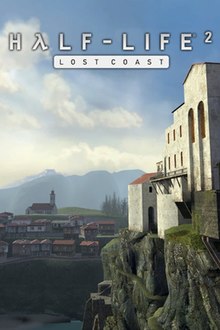 |
|
| Developer(s) | Valve |
| Publisher(s) | Valve |
| Series | Half-Life |
| Engine | Source |
| Platform(s) | Windows, OS X, Linux |
| Release |
|
| Genre(s) | First-person shooter |
| Mode(s) | Single-player |
Half-Life 2: Lost Coast is an additional level for the 2004 first-person shooter video game Half-Life 2. Developed by Valve, it was released on October 27, 2005, through the Steam content delivery service as a free download to owners of the Windows version of Half-Life 2. Lost Coast serves as a technology demonstration, specifically showcasing the high-dynamic-range rendering implemented in the Source engine. The level was designed with a variety of appropriate environments to emphasize these effects. Lost Coast was the first video game developed by Valve to allow developers to explain various elements of design as the player progresses through the level.
Lost Coast follows Half-Life protagonist Gordon Freeman as he travels up a coastal cliff to destroy a Combine Headcrab artillery launcher in a monastery, which is firing on a nearby town, Saint Olga. The Lost Coast level was initially created for Half-Life 2, but was ultimately removed from the game. As a result, it has several minor story details that were not included in Half-Life 2. The level received a generally positive reception, and there was consensus among reviewers that the new features included in Lost Coast should be integrated into future games released by Valve.
Gameplay[edit]
Lost Coast uses the same first-person shooter gameplay as Half-Life 2. The player is equipped with weapons from Half-Life 2, including the object-manipulating gravity gun.[1]
The chancel of the Byzantine Christian church in Lost Coast, which Valve artist Viktor Antonov called a «great showcase for HDR»
Like Half-Life 2, the player controls Gordon Freeman. Freeman must enter a monastery that enemy Combine are using to launch heavy artillery shells into a seaside town.[2] The player encounters Combine soldiers and a few headcrabs before disabling the artillery launcher, and destroying an attack helicopter with RPGs. As the level ends, a fisherman congratulates Gordon on his victory, then exclaims that Gordon is «getting all fuzzy ’round the edges» as he teleports away.[1]
Development[edit]
Level design[edit]
Lost Coast was conceived as a part of the Highway 17 chapter in Half-Life 2 (Highway 17’s development name was «Coast», hence the name «Lost Coast»), but was later discarded during development. As a result, Lost Coast features minor storyline details that were removed from Half-Life 2, such as the headcrab artillery launchers.[3] Each area of the level was designed with a specific purpose. An Eastern Orthodox architectural style was deliberately chosen for the monastery, as buildings of this type «are very colorful and have a large variety of materials» and are «often lit naturally, with extremes of darkness and brightness,» providing an ideal showcase for the HDR lighting effects.[a] Valve also thought a monastery would help provide a starker contrast between old human architecture and futuristic Combine technology inside it.[b]
The cliffside that leads to the monastery had a gameplay-oriented purpose, and was meant to emulate a similar cliffside combat scene in the original Half-Life (1998). The cliffside also forces the player to be observant of threats from above and below, breaking from normal horizontal combat.[c] The monastery’s courtyard was designed as an area where the player recovers from the cliffside combat, while also presenting a contained combat arena later in the level in which the player must hold their ground while they are attacked from multiple directions.[d]
High-dynamic-range rendering[edit]
A comparison of standard fixed-aperture rendering (left) with HDR rendering (right) in the Source engine
The goal of Lost Coast was to demonstrate the new high-dynamic-range rendering implemented into the Source game engine.[4] Valve first attempted to implement high-dynamic-range rendering in Source in late 2003. The first method stored textures in RGBA color space, allowing for multisample anti-aliasing and pixel shaders to be used, but this prevented alpha mapping and fog effects from working correctly, as well as making textures appear sharp and jagged.[5] The second method involved saving two versions of a texture: one with regular data, and the other with overbrightening data. However, this technique did not allow for multisample anti-aliasing and consumed twice as much video card memory, making it infeasible.[5] The third method, shown at the E3 convention in 2005, used floating-point data to define the RGB color space, allowing for reasonably efficient storage of the high-dynamic-range data. However, this method also did not allow for multisample anti-aliasing, and was only compatible with Nvidia video cards, leaving ATI cards unable to run high dynamic range.[5] The fourth and final method compromised between the second and third methods, using overbrightening textures sparingly and allowing ATI cards to render HDR in a different way to the Nvidia ones while nearly producing the same result.[5]
The final version of Valve’s high-dynamic-range technology adds a significant number of lighting effects to the engine, aimed at making the game appear more realistic. Bloom shading was introduced, blurring bright edges in the game world and emulating a camera’s overexposure to light.[6] This is combined with exposure control to tailor the effect to represent the human eye. For example, as the player exits a dark area into a light area, the new area is initially glaringly bright, but quickly darkens, representing the adjustment of the player character’s eyes to the light.[7] New cube mapping techniques allow the reflection cast by an object to correspond with the brightness of the light source, and lightmaps enable light bouncing and global illumination to be taken into account in the rendering.[6] Refraction effects were added to make light account for the physical attributes of an object and to emulate the way light is reflected by water.[6] The Lost Coast level is specifically designed to showcase these effects. It uses the sea and beach as opportunities to demonstrate water-based effects, the monastery to demonstrate bloom from its whitewash walls, and the sanctuary to provide the means to show refraction through stained glass windows and cube maps on golden urns and candlesticks.[8]
As a technology showcase, Valve considered Lost Coast to have very demanding system requirements.[9] The game runs on computers with specifications lower than what is recommended, albeit without some key features such as high dynamic range. If a non-high-dynamic-range-capable card is used, the developer commentary is changed slightly to reflect this. For example, Valve president Gabe Newell would describe the effects that are seen differently.[10]
[edit]
In addition to a showcase for visual improvements, Lost Coast acted as a testbed for Valve’s commentary system. When the feature is enabled, additional items appear in the game that can be interacted with to play audio commentary. Each audio piece ranges from ten seconds to a minute of commentary. Players hear the developers talk about what the player is seeing, what is happening, why they made certain decisions, and what kinds of challenges they faced. Commentary tracks are represented by floating speech bubbles called commentary nodes.[11] Valve intended for players to first play the level with commentary disabled, and after completing the level, play it again with commentary enabled, learning about each new stage as they progress.[12] The company has since made the commentary system standard in all its later video games.[13]
Release and reception[edit]
Lost Coast was released on October 27, 2005, as a free download from Valve’s Steam content delivery service to anyone who purchased Half-Life 2.[14] People who received Half-Life 2 as a gift from Valve’s online store were not eligible to download the level. Valve announced on May 30, 2007, that Lost Coast, along with Half-Life 2: Deathmatch, would be made available for free to owners of ATI Radeon cards.[15] It was later released without charge to Nvidia graphics card owners along with Half-Life 2: Deathmatch, Peggle Extreme, and the first eleven levels of Portal.[16]
Lost Coast was generally well-received by video game critics. 1UP.com enjoyed the amount of detail, including the graphics, puzzles, and intelligent enemies, saying, «Valve just packed more atmosphere into a tiny snippet than most shooters muster, period.» The review also praised the level’s commentary system, calling it an informative addition, and enjoyed the interesting and insightful comments made by some of its creators.[17] The level satisfied UGO because «it would be harder not to enjoy this level in all its beautifully rendered glory—even after you’ve broken all the windows and spattered the walls with Combine blood,»[18] and GameSpot commented that «the textures in Lost Coast are noticeably more detailed and numerous than in the retail game.» The review concluded hoping that the features introduced in Lost Coast would be included in Valve’s future releases.[10]
Negative reaction to the game focused on its length and gameplay. 1UP.com and UGO both considered it short;[17][18] Shawn Elliott of 1UP.com described it as «a lickety-split run through postcard-pretty tide pools, up cliffs, and into a church turned Combine outpost».[17] UGO’s Nigel Grammer stated that Lost Coast‘s gameplay seemed to be secondary to the level’s graphics.[18] Lost Coast‘s gameplay disappointed Brad Shoemaker of GameSpot, who compared it to that of Half-Life 2 and considered them to be very similar, saying that it «isn’t going to set the world on fire».[10]
Notes[edit]
- ^ Valve (2005). Half-Life 2: Lost Coast (PC).
Viktor Antonov: Churches are great dramatic spaces. They’re often lit naturally, with extremes of darkness and brightness, which makes them a great showcase for HDR. Gothic churches are the sober, monochromatic spaces that you’ve seen in almost every horror movie or game. Byzantine churches, on the other hand, are very colourful and have a large variety of materials. We wanted that color & material variety to show off our HDR reflections.
- ^ Valve (2005). Half-Life 2: Lost Coast (PC).
Viktor Antonov: We also like to focus on contrasting elements in our settings, like ancient human architecture and futuristic Combine technology. A monastery fit these requirements perfectly. Monasteries are generally isolated, unlit, and built ages ago. They provide a great backdrop for the contrasting Combine technology.
- ^ Valve (2005). Half-Life 2: Lost Coast (PC).
Robin Walker: We were particularly happy with the vertical cliffside in Half-Life 1, and regretted that we didn’t iterate further on that concept in Half-Life 2. Vertical space allows us to force the player to deal with threats from above and below. We find that players focus their view on the direction they’re travelling, so by using a cliffside, and having the player ascend it, we ensure the player will look up and be prepared for enemies. If the player’s path was to move past the bottom of the cliffside, it would be unlikely he would notice the soldiers rappelling down from above.
- ^ Valve (2005). Half-Life 2: Lost Coast (PC).
Robin Walker: The courtyard in front of you is a space we call an Arena. Arenas are built to hold the player for a period of time, and usually contain combat or some other challenge. They often have multiple entry-points for enemies, along with a gate of some kind to prevent the player moving on, until the challenge has been completed. In this case, the arena is free of enemies until the player solves a puzzle, and triggers an alarm. […] The break in action here is also a crucial part of the level’s pacing. It allows the player to recover and explore the world a little, after being attacked on the way up the cliffside.
References[edit]
- ^ a b «Half-Life 2: Lost Coast Walkthrough». Planet Half-Life. GameSpy. Archived from the original on November 13, 2012. Retrieved November 21, 2008.
- ^ «Half-Life 2: Lost Coast Allies». Planet Half-Life. GameSpy. Archived from the original on April 26, 2013. Retrieved November 21, 2008.
- ^ Accrado, Sal (October 28, 2005). «Half-Life 2: The Lost Coast (PC)». GameSpy. Archived from the original on October 11, 2012. Retrieved October 17, 2008.
- ^ Lee, Garnett (August 29, 2005). «Half-Life 2: Aftermath and Lost Coast«. 1UP.com. Archived from the original on May 22, 2011. Retrieved November 20, 2008.
- ^ a b c d Reimer, Jeremy (September 15, 2005). «A primer on HDR and a tour of Valve’s Lost Coast: The road to HDR». Ars Technica. Archived from the original on January 29, 2009. Retrieved November 21, 2008.
- ^ a b c Richards, Geoff (June 14, 2005). «Lost Coast / Source HDR Feature Set». bit-tech. Archived from the original on February 1, 2009. Retrieved November 20, 2008.
- ^ Richards, Geoff (June 14, 2005). «Under & Over Exposure». bit-tech. Archived from the original on December 4, 2008. Retrieved November 20, 2008.
- ^ Richards, Geoff (June 14, 2006). «Half Life 2: Lost Coast HDR Eye Candy». bit-tech. Archived from the original on February 16, 2008. Retrieved November 20, 2008.
- ^ Bramwell, Tom (October 28, 2005). «HL2 Lost Coast released». Eurogamer. Archived from the original on September 19, 2012. Retrieved November 20, 2008.
- ^ a b c Shoemaker, Brad (July 28, 2005). «Half-Life 2 Lost Coast Hands-On». GameSpot. Archived from the original on November 3, 2012. Retrieved October 17, 2008.
- ^ «Half-Life 2: Lost Coast Overview». Planet Half-Life. GameSpy. Archived from the original on October 10, 2012. Retrieved November 21, 2008.
- ^ Richards, Geoff (September 14, 2005). «Preview: Half-Life 2: Lost Coast: Thoughts». bit-tech. Archived from the original on February 14, 2008. Retrieved November 21, 2008.
- ^ «Steam Marketing Message». Valve. August 5, 2005. Archived from the original on February 14, 2012. Retrieved October 17, 2008.
- ^ Pinckard, Jane (October 27, 2005). «Lost Coast Out Now». 1UP. Archived from the original on October 31, 2007. Retrieved November 20, 2008.
- ^ Valich, Theo (May 30, 2007). «Valve gives free games to ATI Radeon owners». The Inquirer. Archived from the original on April 15, 2008. Retrieved May 31, 2007.
{{cite web}}: CS1 maint: unfit URL (link) - ^ Swinburne, Richard (January 10, 2008). «Free Portal to all Nvidia GeForce owners». bit-tech. Archived from the original on June 15, 2011. Retrieved November 29, 2008.
- ^ a b c Elliott, Shawn (October 28, 2005). «Half-Life 2: Lost Coast (PC)». 1UP. Archived from the original on May 24, 2011. Retrieved November 20, 2008.
- ^ a b c Grammer, Nigel. «Half-Life 2: Lost Coast Review». UGO. Archived from the original on June 15, 2011. Retrieved November 20, 2008.
External links[edit]
- Half-Life 2: Lost Coast Archived September 30, 2007, at the Wayback Machine preview by Eurogamer
This audio file was created from a revision of this article dated 4 January 2019, and does not reflect subsequent edits.





